You may have been thinking about doing an IoT application that could help your company, but embarking on your first industrial IoT application may seem daunting.
I’ve heard Opto 22 Vice President of Marketing and Product Strategy Benson Hougland tell people to "start small," or "just get started."
This advice was echoed recently in a TV IoT interview with Andy Rhodes, now VP of Commercial Mobility Solutions and Edge IoT at Dell. When asked, "What would you say to people contemplating a project?" Andy replies frankly, "Get started. Pick a project."
So how do you do that? Think of a desired outcome first, and go backwards to what technology it would take to achieve that outcome.
Monitoring a compressor
I decided to see how I might do this for a simple example: a compressor. Compressors are very common in most industrial facilities and buildings, can be instrumented fairly easily, and are a great candidate for predictive maintenance—one of the terms you hear a lot in the context of IoT.
So my desired outcome would be to move away from preventative maintenance to predictive, as well as to to eliminate unnecessary costs that scheduled maintenance can often result in. (Yes, there is such thing as too much maintenance.)
The compressor I looked at is a 40 HP rotary screw compressor (shown below), and a great example of legacy equipment you might want to get data from.
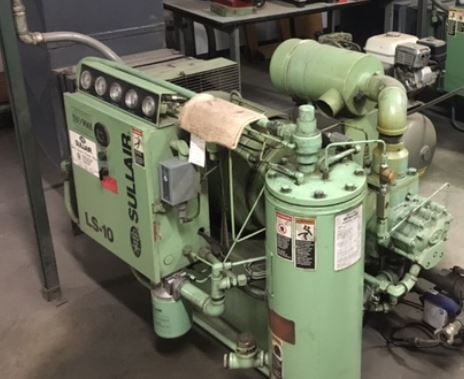
It has visual analog gauges for some parameters, but no connection of these values to the outside world.
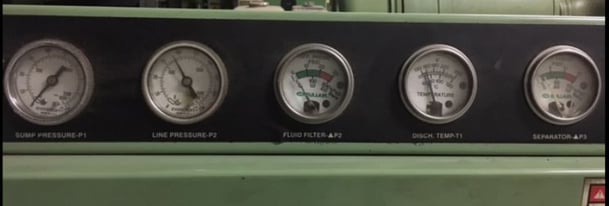
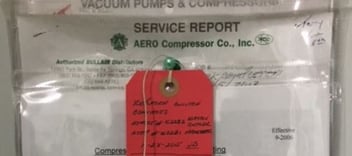 The facilities manager told me they perform preventative maintenance about once a year, and we found a report from the most recent service.
The facilities manager told me they perform preventative maintenance about once a year, and we found a report from the most recent service.
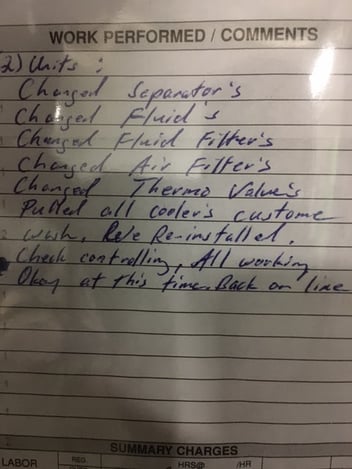
I verified with the manufacturer's documentation that these items line up with yearly service recommendations.
There were also other checks and maintenance items recommended at weekly, monthly, and 3-month intervals.
What values to monitor?
To move from this periodic compressor maintenance to predictive maintenance, the three parameters I would monitor are:
- Motor temperature
- Vibration
- Motor current
These parameters are good indicators of compressor health, are simple to start with, and can be instrumented without too much effort or cost—and without taking the machine apart.
Differential pressure across the fluid would also give us great data to trigger filter replacement, but measuring it might require pipework. Motor current or perhaps additional temperature sensors on the fluid pipes would suffice for now.
For temperature, all we're looking for is a trend, so a simple Type J or K thermocouple could be mounted on the motor housing. This would be wired to a SNAP-AITM thermocouple input module.
Next, we would need a vibration sensor with a 4-20 mA output. These sensors are widely available, inexpensive, and could be mounted on the motor and other areas. We would need 12-30 VDC to power the loop, and the 4-20 mA signal would be wired to a SNAP-AIMA module.
Next, we could measure the motor's 3-phase current by using three split-core current transformers installed at the compressor disconnect switch. The motor is rated at about 90 amps, so we'd select appropriate CTs with an adequate inner diameter to accommodate the feed wire.
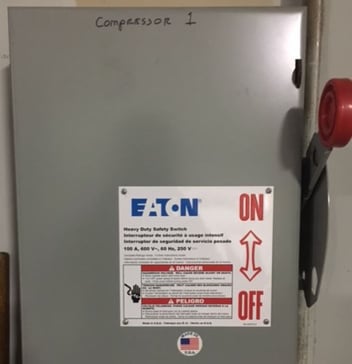
Many CTs have a standard 5 amp secondary, so we would wire these three signals to two SNAP-AIARMS modules.
To complete our monitoring system, we would need:
- A 4-position I/O rack, SNAP-PAC-RCK4, to mount our modules
- A rack-mounted controller such as the SNAP-PAC-R2
- A power supply to power the monitoring system. Since we already will need DC for the vibration sensor, we could select a SNAP-PS5-24DC.
I noticed an Ethernet switch close by with an available port, so we could put the monitoring system on the plant network. Configuring the I/O modules and points is easy with the free PAC Manager tool.
Getting data where it needs to go
At this point we would be ready to start getting the data somewhere where we could log it, visualize it, and get notifications on anomalies.
This "somewhere" could be either on the same network as the monitoring system (that is, at the edge), using something like a groov device. Or it could be in the cloud, using one of the many third-party IoT platforms out there, such as IBM’s Watson. Watson has a basic rules engine for notifications, and the data could also be shared with other Bluemix services for more advanced analytics. (You might be interested in our video showing how to get real-world data into IBM Watson.)

So this was an example of how one might "just get started" with a simple, inexpensive IoT application on a common piece of equipment.
Even with simple condition-based monitoring on these three parameters, we would probably have enough data to change from preventative maintenance to predictive for the compressor.
The project is also scalable: after some experience and insights are gained, additional sensors and instruments could be installed on other pieces of equipment and the monitoring system expanded—even to include controls to react on actionable intelligence.
I would welcome any ideas you might have for your first IoT project.


